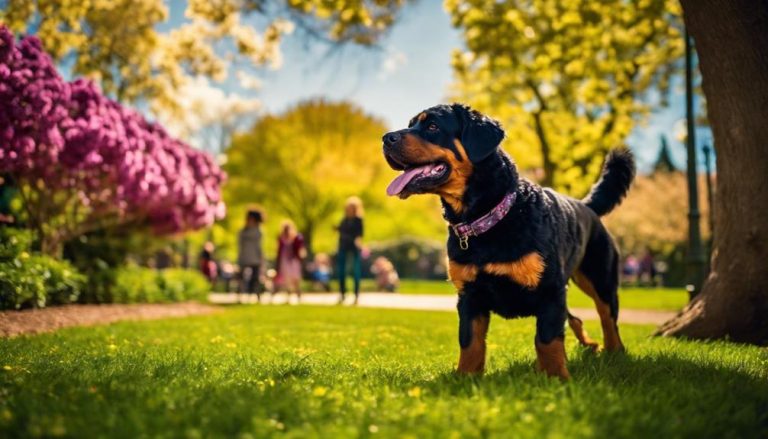Rottle: The Rottweiler Poodle Mix
The Rottle is a unique blend of the Rottweiler and Poodle breeds, originating from Germany. This mix aims to combine the best traits of both parents, focusing on health, smarts, and a coat that’s friendly for those with allergies. Rottles typically weigh in at 50-90 lbs, making them a versatile size that fits many homes. They inherit the Rottweiler’s smart protection instincts and the Poodle’s stylish, low-shed coat.
When it comes to their health, it’s vital to watch out for issues like hip dysplasia and eye problems, which are common concerns passed down from their Rottweiler and Poodle ancestors. Keeping a Rottle healthy involves a mix of good nutrition, regular physical activity, and grooming. Plus, routine check-ups with the vet are essential. Understanding and meeting their care needs are key to helping them thrive and creating a positive environment for these dogs.
Key Takeaways
- Rottle dogs blend Rottweiler and Poodle smarts and power.
- Their coat is allergy-friendly, needs grooming.
- Exercise 60-90 minutes daily prevents bad habits.
Quick Facts
Merging the loyal nature of the Rottweiler with the smart qualities of the Poodle, the Rottle stands out as a medium to large-sized dog breed with hypoallergenic fur. This breed was developed in Germany and is known for its combination of strength and intelligence. The Rottle is becoming increasingly popular among people who want a versatile and smart pet.
Rottles are fairly big, weighing between 50-90 lbs, which means they can fit well in a variety of homes as long as they have enough room to roam. Their hypoallergenic coat, a trait inherited from the Poodle side, is a big plus for families with allergies. These dogs are also quick learners which makes them easy to train, fitting well as both family pets and guard dogs.
When it comes to health, the Rottle might have fewer genetic problems thanks to the mix of breeds, which is often the case with mixed breeds. Even so, future owners should watch out for issues like hip dysplasia and heart problems, which are common in both Rottweilers and Poodles. Keeping up with veterinary visits and proper care is key to keeping them healthy.
Overview
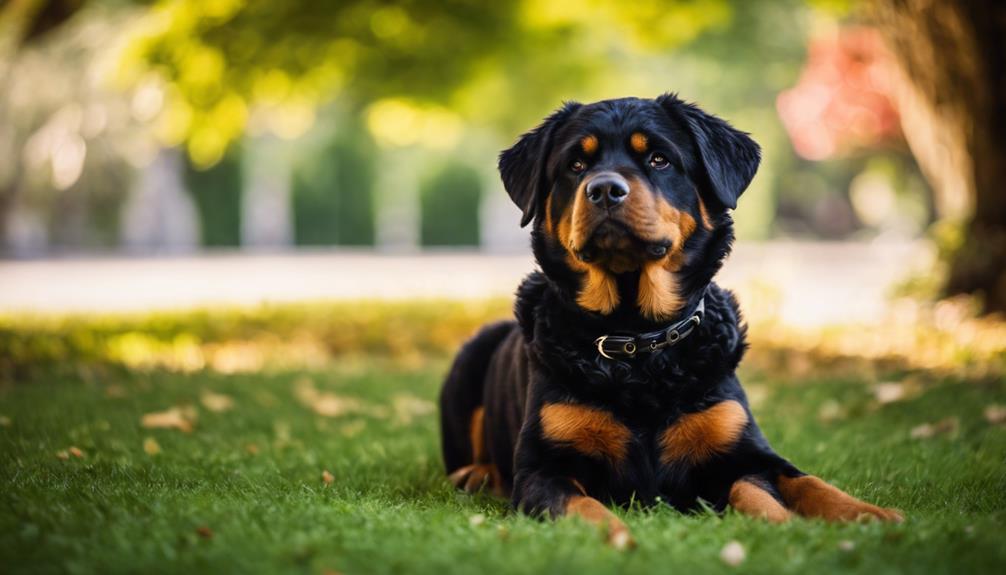
The Rottle is a hybrid dog breed from Germany, blending the strength of a Rottweiler with the hypoallergenic coat of a Poodle. This mix results in a medium to large-sized dog that is both smart and loyal. They typically weigh between 50-90 lbs and have a muscular build, a round head, and soft ears. Their coats can be gray, blue, red, among other colors, showcasing their varied genetic background.
Thanks to their Poodle ancestors, Rottles have coats that are less likely to trigger allergies, making them a good option for families concerned about allergies. They are known for being quick learners and easy to train due to the intelligence and eagerness to please found in both parent breeds. However, it’s crucial for potential owners to remember that Rottles need regular grooming, plenty of exercise, and social opportunities to stay healthy and happy.
Caring for a Rottle involves more than just love and attention. Regular visits to the vet, a balanced diet, and preventive care are key to ensuring a long and healthy life. Owning a Rottle can be very rewarding, but it also requires a commitment to meet their specific needs.
Rottle Temperament Overview
Rottle dogs are known for their balanced temperament, combining affection and a protective nature. This makes them great family pets that can also keep watch. Their behavior greatly depends on their upbringing, which should include socializing, exercising, and brain games.
| Trait | Description |
|---|---|
| Protective | Rottles naturally want to protect their family, acting as effective guard dogs. |
| Affectionate | They may look tough, but they’re incredibly loving with their family members. |
| Trainable | Thanks to their smarts and eagerness to please, training Rottles is usually straightforward. |
| Social | It’s critical to socialize them early to prevent aggression and ensure they’re well-behaved. |
To bring out the best in a Rottle, it’s important to provide care that encourages their loving and vigilant nature. With the right training and attention, Rottles can shine in roles that make the most of their loyalty and affection, becoming cherished family members.
Rottle Breed Origins
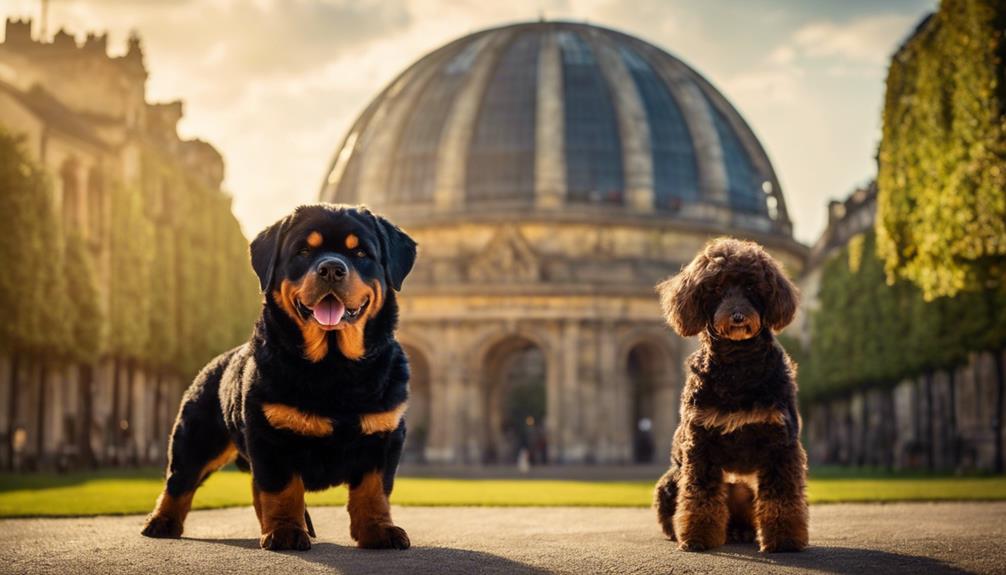
The Rottle breed is a unique mix of Rottweiler and Poodle, created in Germany in the 1980s. This hybrid was designed to take the best features from both breeds. It combines the Poodle’s low-shedding coat with the Rottweiler’s strength. The goal was to create a dog that was both easy to live with for allergy sufferers and physically robust.
Origins of the Rottle emerged from a wish to blend the intelligence and minimal shedding coat of the Poodle with the Rottweiler’s protective nature and physicality. This mix is not just about looks; it’s about creating a healthier, well-rounded companion.
The development of the Rottle is ongoing, with breeders focusing on enhancing the health and temperament of these dogs. By mixing these two breeds, the aim is to lower the risk of genetic diseases that often affect purebreds.
One key aspect of the Rottle’s appeal is its contribution to canine diversity. This crossbreed demonstrates how mixing breeds can lead to healthier dogs and offers new options for people looking for specific traits in a pet.
Historical Beginnings
Originating in Germany during the 1980s, the Rottle breed is a creative combination of the Poodle and the Rottweiler. This mix was aimed at bringing together the best qualities of both breeds into one.
The Poodle is known for its intelligence and was initially bred for retrieving game from water, a testament to its long-standing value as a working and companion dog. On the other hand, the Rottweiler, which has been around since 74 A.D. for herding and protection roles, almost disappeared before dog lovers brought it back in 1899, proving its enduring appeal and toughness.
The creation of the Rottle taps into the agility of the Poodle and the strength of the Rottweiler. This combination results in a dog that is not only versatile and adaptable but also potentially very healthy, thanks to the strong genetic heritage from both sides. The aim was to produce a companion that could fit well into various lifestyles, showcasing the enduring qualities of both its ancestors.
Rottweiler-Poodle Mix
The Rottle, a mix between a Rottweiler and a Poodle, emerged in Germany during the 1980s. This breed blends the Rottweiler’s strength in herding and guarding with the Poodle’s sharp hunting abilities and allergy-friendly coat. These dogs vary in size, ranging from 10 to 27 inches in height and weighing from 50 to 100 lbs. Their coats are notable for being hypoallergenic and come in various colors such as brown, black, red, white, blue, and phantom.
Rottles are known for being protective, loyal, and loving pets. They need plenty of exercise, mental stimulation, and time with their humans to be happy.
Evolution of Rottle
The creation of the Rottle back in the 1980s in Germany marked a big step in the world of designer dog breeds. This breed mixes the strong protective instincts of Rottweilers with the smart, allergy-friendly traits of Poodles. The goal behind the Rottle was to create a dog that is not only good-looking but also healthy and intelligent.
Rottweilers were once on the brink of extinction by the late 1800s, but thanks to efforts in 1899, they made a comeback. Poodles have been appreciated for their hunting skills since ancient times and are also valued for their smart, hypoallergenic fur.
The Rottle stands as a testament to careful breeding, blending the best of both its ancestors. It offers a mix of loyalty, smarts, and a unique look that makes it a wonderful pet. This breed showcases how thoughtful breeding can lead to dogs that excel in both appearance and health.
Medium to Large Breed
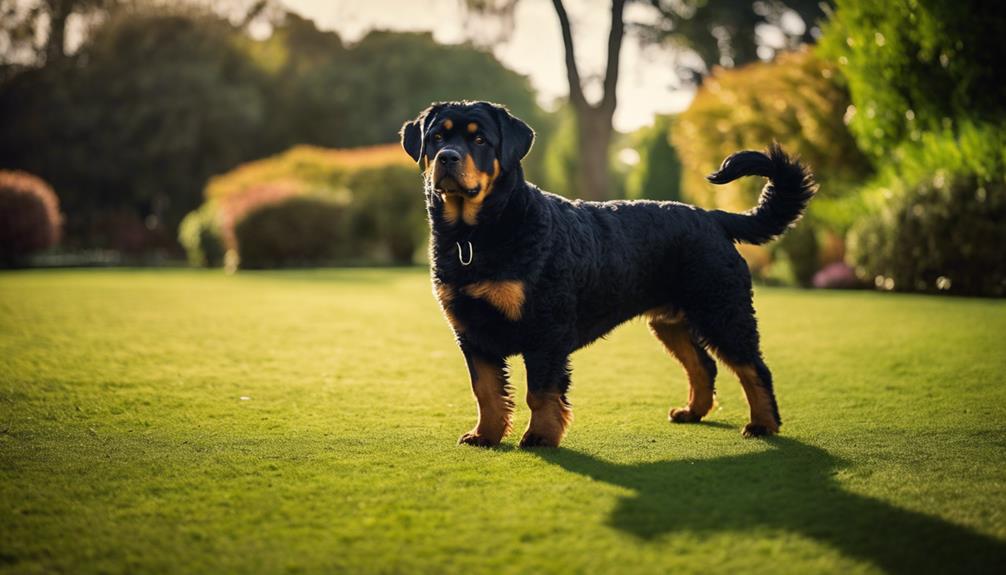
For those considering adding a medium to large Rottle dog to their family, it’s essential to understand what makes this breed tick. Rottles, a mix between a Rottweiler and a Poodle, are known for their strong physique and lively spirit. This guide covers crucial aspects of care for these unique dogs, from their diet and exercise needs to grooming and health concerns, ensuring they lead a happy, healthy life.
Rottle Size Expectations: Keeping an eye on their growth and ensuring they maintain a healthy weight are key to avoiding joint problems. Since Rottles can get quite big, monitoring their size helps prevent issues down the line.
Exercise Needs: Rottles thrive with plenty of exercises. Their muscular build and high energy mean they benefit greatly from regular, organized activities to stay fit and content.
Health Considerations: It’s important to keep a close watch for conditions that Rottles may be prone to, such as hip dysplasia and bloat. Early detection and treatment can make a big difference in their quality of life.
Feeding Guidelines: Feeding your Rottle a balanced diet that’s right for their age, size, and energy level is crucial in avoiding obesity and its complications. Knowing what and how much to feed them can help keep them in top shape.
Grooming and Care: Due to their often thick and curly coats, Rottles require consistent grooming. Regular brushing and skin checks are important to keep their coat looking good and their skin healthy.
Rottle Size Expectations
When you’re thinking about bringing a Rottle into your home, it’s really important to consider their size. Rottles are a mix between Rottweilers and Standard Poodles, so they can be pretty big dogs. They usually stand between 10 to 27 inches tall and weigh anywhere from 50 to 100 pounds. This means you’ll need a space that’s big enough for them to move around comfortably.
These dogs have a lot of muscle, thanks to their Rottweiler and Poodle parents. That muscular build is part of what makes a Rottle look so impressive. But it also means they need plenty of room to exercise and stay healthy. Before you decide to get a Rottle, think about whether your living situation can handle a large, active dog. They’re great companions, but they do need the right environment to flourish.
Exercise Needs
Rottle dogs need a lot of exercise to stay healthy and avoid acting out. They should get between 60-90 minutes of activity every day. Activities like running, swimming, and agility training are great for them. These not only keep them fit but also keep their minds sharp, which is crucial for their happiness.
Exercising regularly keeps Rottle dogs at a healthy weight and lowers the risk of problems related to being overweight. Plus, getting enough exercise helps them burn off energy in a good way, so they’re less likely to be destructive at home. So, having a regular exercise plan is key for the wellbeing of Rottle dogs.
Health Considerations
Regular physical activity is key in lowering health risks for Rottle dogs, but their genetic makeup is also vital to their health, especially for those of medium to large size. Hip dysplasia is a common problem for larger dogs and is a major concern for Rottles due to their size and Rottweiler heritage. This condition affects the hip joint and requires close attention to prevent serious mobility issues.
The Poodle side of their lineage means they could also face eye disorders, so regular vet checks are crucial. Their tendency to gain weight makes a balanced diet and consistent exercise crucial. Good dental hygiene is important to prevent dental diseases that can harm their overall health.
Feeding Guidelines
Proper nutrition is key to keeping Rottle dogs healthy, especially since they’re usually medium to large in size. To ensure they get all the nutrients they need for optimal growth and health, it’s important to follow specific feeding guidelines.
Rottle dogs should eat 2-3 cups of high-quality dog food daily, split between two meals. This diet should have a protein content of 20-25% to support their muscle development, which is vital given their active lifestyle. Including healthy fats like omega-3 and omega-6 fatty acids helps keep their coat and skin in good condition. Overfeeding should be avoided to prevent obesity, which can lead to joint problems in these dogs.
It’s a good idea to work with a vet to create a feeding plan that meets your Rottle’s unique needs based on age, weight, and how active they are.
Grooming and Care
After covering the dietary needs of Rottle dogs, it’s crucial to focus on their grooming and care. These aspects are vital for their health and happiness. Rottles need to be brushed and combed several times a week using a pin brush to prevent their thick, curly coats from tangling. Regular brushing keeps their fur neat and reduces shedding.
It’s necessary to bathe Rottle dogs every few weeks using a gentle dog shampoo. This routine helps in keeping their coat clean and healthy. Apart from that, trimming their nails every month and cleaning their ears regularly are key practices for maintaining their hygiene. Some Rottles might even benefit from professional grooming to ensure their coat stays in top condition. Overall, proper grooming not only keeps Rottle dogs looking good but also supports their well-being.
Loyal and Affectionate Nature
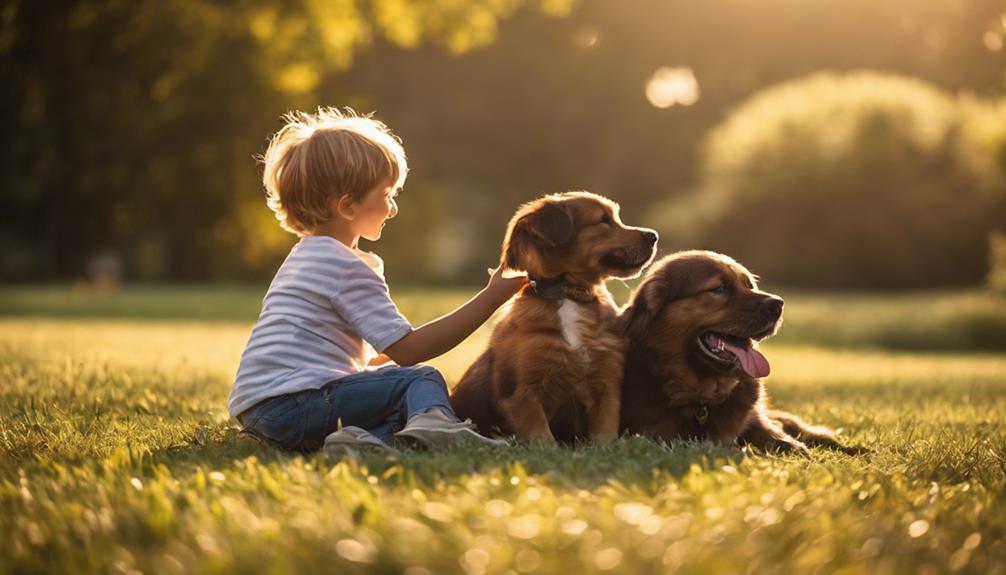
The loyal and affectionate nature of Rottle dogs is not just what makes them stand out, but it’s also vital for their happiness. To truly bond with these dogs, it’s all about showing you understand and care for their needs, which in turn, helps them trust and protect their families more.
Bonding with Rottles means having regular, positive moments with them. This helps grow a deep emotional connection.
Showing Love Effectively involves knowing how Rottles give and need affection. Each Rottle has its own way of expressing love, and recognizing this strengthens your relationship.
Rottles have a great sense of Emotional Intelligence. Creating a supportive environment allows them to better understand and react to how people feel.
Trust-Building Activities are fun ways to make your bond with your Rottle stronger. Doing things together builds trust.
Signs of Affection include the different ways Rottles show they care. It’s important to notice and cherish these moments, from the little looks to the big leaps of joy.
Through these steps, Rottle owners can ensure their furry companions feel understood and valued. This not only makes for a happier dog but also forges an unbreakable bond between pet and owner.
Bonding With Rottles
Building a strong connection with a Rottle is key to unlocking their loyal and loving nature, which is crucial for their happiness and a positive relationship with their owner. Rottles are known for their devotion and warmth. They do best when their emotional needs are met with steady care, attention, and positive encouragement. This approach helps to bring out their loving side and maintain their instinct to protect those they care about.
Activities that promote mutual respect and understanding are essential for a lasting bond. This includes regular training sessions, which keep their minds active and are a great way to spend quality time together. A Rottle that feels valued and understood is more likely to be a faithful companion, showing loyalty and love through its actions.
Showing Love Effectively
Understanding the loyal and loving nature of Rottle dogs is key to showing them how much we care and strengthening our bond. These dogs are deeply devoted to their families, creating strong emotional ties. They show their affection through cuddles and playful actions, making it important for owners to respond with the same level of warmth and enthusiasm.
Rottles Emotional Intelligence
Rottles are known for their deep emotional connection with their humans, showcasing an impressive ability to sense and respond to their owners’ feelings. This makes them more than just pets; they become integral members of the family. They’re known for their loyalty and affection, making every day with them special.
Their knack for picking up on how we feel means they’re always there to offer comfort when we’re down or join in on the joy when we’re up. This emotional support they provide is key to why they’re considered such great companions. It’s this combination of intuition and affection that strengthens the bond between Rottles and their families.
Rottles stand out as family pets because of this emotional intelligence. They don’t just live with us; they actively participate in family life, tuning into our emotions and providing support without needing to be asked. This trait not only makes them wonderful companions but also has a positive impact on the well-being of their owners.
Their unwavering dedication to their families is a testament to their character. It’s not just about being a good dog; it’s about being a part of the family. This level of commitment from a Rottle enriches the lives of its owners, showcasing why they are such valued family members.
Trust-Building Activities
Participating in activities that build trust is key to developing a strong relationship with Rottle dogs. These activities include training, playtime, and making sure they socialize properly. When you train your Rottle using positive methods, it helps them learn good behavior and builds a foundation of trust.
Regular physical and mental challenges are crucial for their overall happiness, making them more loyal and loving. Engaging in such activities regularly ensures your Rottle’s emotional and physical health, fostering their natural tendencies toward loyalty and affection.
A comprehensive approach to building trust is vital for a healthy, loyal, and affectionate relationship with your Rottle.
Signs of Affection
Rottle dogs are known for their affectionate behaviors, which range from gentle kisses to excited tail wagging. These actions show their love and loyalty towards their owners. They love to cuddle, follow their owners everywhere, and want attention, showing just how devoted they are. When they lean on their owners or sit close, they’re seeking physical contact to share their bond.
The way they wag their tails, give gentle kisses, and show excitement when their owner comes home are clear signs of their loving nature. These actions reflect the Rottle’s loyal and affectionate characteristics, making them ideal pets for families looking for a loving companion.
Hip Dysplasia Risks
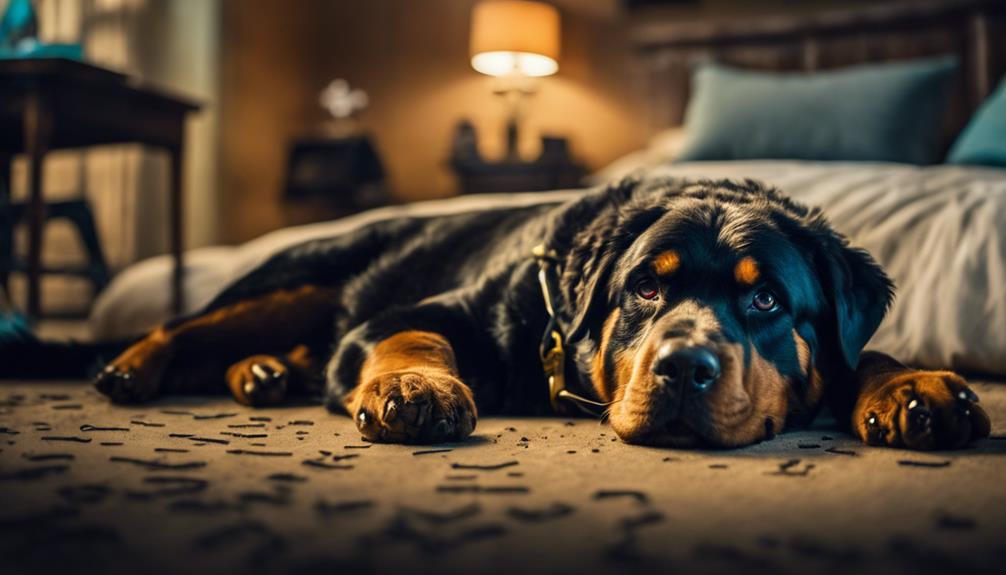
Hip dysplasia is a major health issue in the Rottle dog breed, leading to a need for comprehensive knowledge of its causes, symptoms, treatment, and how to prevent it. This condition, where the hip joint doesn’t form correctly, can cause severe arthritis and pain, making it a serious challenge for vets and dog owners. We’ll cover the essential topics:
- Causes of Hip Dysplasia
- Symptoms and Diagnosis
- Prevention Strategies
- Treatment Options
- The influence of Genetics and Environment
Understanding the Causes and Symptoms
Hip dysplasia in Rottle dogs stems from a combination of genetic and environmental factors. It’s crucial for owners to recognize early signs like difficulty standing up, limping, or reduced activity levels to catch this condition early.
Prevention and Treatment Insights
Preventing hip dysplasia involves breeding practices that consider the genetic background of the dogs and maintaining a healthy weight through diet and exercise. When it comes to treatment, options range from physical therapy to surgery, depending on the severity.
Genetics and Environment: A Dual Influence
Genetics play a significant role in hip dysplasia, but environmental factors like diet, exercise, and the dog’s weight also have a major impact. It’s vital for Rottle owners to create a healthy lifestyle for their dogs to minimize the risks.
Causes of Hip Dysplasia
Hip dysplasia is often genetic in Rottle dogs, but environmental factors such as quick growth, too much exercise, and being overweight can play a big role in how severe it becomes. This condition means the hip joint doesn’t form right, causing issues with movement and pain.
Because of their genes, Rottle dogs are more likely to get hip dysplasia, but how bad it gets and when it starts can be made worse by things around them. Quick growth in large breed puppies can stress their growing joints too much. Too much exercise, especially in young dogs, can wear out the joints quickly and lead to hip dysplasia sooner. Being overweight puts extra pressure on the hips, raising the risk of this problem even more.
Symptoms and Diagnosis
Symptoms like limping, reluctance to get up, and lower energy levels can signal hip dysplasia in Rottle dogs. These signs should prompt a vet visit. Rottle dogs, with their Rottweiler heritage, are naturally at risk for hip dysplasia. Catching it early through a vet’s examination is key.
A vet usually checks the dog’s condition by physically examining them and using x-rays to look at the hips. This helps the vet see how the hip joints are doing and plan for the dog’s care. Spotting hip dysplasia early is why regular vet visits are crucial for keeping Rottle dogs healthy.
Prevention and Treatment
To prevent hip dysplasia in Rottle dogs, it’s crucial to combine regular vet visits, a diet tailored to their needs, and the right amount of exercise. These dogs have Rottweiler genes, making them more likely to get hip dysplasia. Catching it early through vet care is key to managing the condition. Keeping their weight in check and giving them the right nutrients can lower the risk, as extra weight puts more stress on their joints. Exercise that’s not too intense helps keep their joints in good shape.
For dogs already dealing with hip dysplasia, treatments vary. They might need medication, physical therapy, or even surgery if it’s severe. Choosing to breed Rottle dogs responsibly can also reduce the chances of hip dysplasia, showing how important genetics are in prevention.
Grooming and Health Maintenance
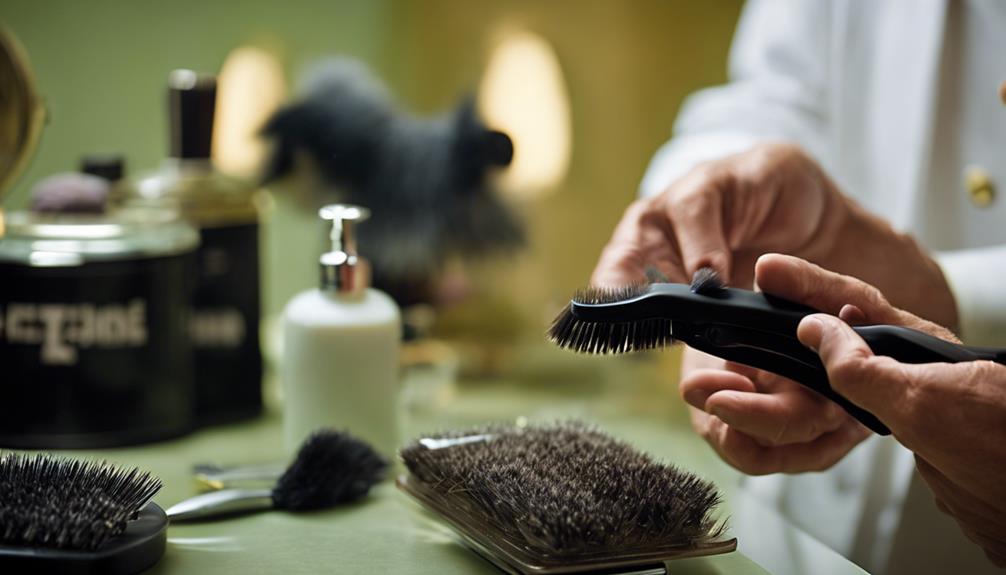
Grooming and health maintenance are critical for Rottle dogs to live happily and healthily. By focusing on good grooming habits and keeping an eye on their health, we can prevent many common issues that affect these dogs. Here are some straightforward strategies to keep your Rottle looking and feeling great.
Brushing and the occasional trip to a professional groomer are essential. This keeps their coat in top condition and prevents matting and skin problems. For their coat, using a mild dog shampoo every two weeks will keep it clean and shiny without irritating their skin.
Regular vet check-ups are crucial for catching any health issues early on. This proactive approach can make a big difference in your dog’s health. Keeping an eye on their diet and making sure they don’t eat too much is important to avoid weight gain, which can lead to other health problems.
Lastly, daily exercise is non-negotiable for keeping your Rottle healthy. It helps with their cardiovascular health and prevents joint issues by keeping them active and mobile.
Grooming Essentials
To keep Rottles healthy and happy, it’s vital to have a solid grooming routine. This involves regular brushing, baths, and taking care of their nails and ears to prevent infections and other health problems. Using a pin brush and comb a few times a week helps keep their coat shiny and prevents tangles, while bathing them every other week with a gentle dog shampoo keeps their skin and fur in good condition.
Regular grooming not only keeps Rottles looking great but also helps catch any early signs of skin issues or infections. Trimming their nails monthly and cleaning their ears regularly are crucial steps to avoid discomfort and health complications. For some dogs, visiting a professional groomer might be the best way to ensure their coat and skin stay healthy, showing how important proper care is for their overall well-being.
Coat Care Tips
To keep Rottle dogs looking and feeling their best, it’s crucial to have a solid grooming routine. This means brushing their coats at least once a week and giving them a bath every two weeks with a dog shampoo that’s kind to their skin. Regular grooming not only keeps their coat shiny but also helps prevent skin issues.
Brushing spreads the dog’s natural oils evenly across their coat, protecting the skin and making the fur look healthy. In addition to coat care, cutting their nails every month and cleaning their ears are essential steps to avoid any discomfort or potential ear problems. Some Rottle dogs might need to visit a professional groomer, especially if their coat requires special attention.
Committing to these grooming tasks is key to ensuring your Rottle dog’s health and happiness. It’s more than just making them look good—it’s about keeping them comfortable and free from common health problems.
Health Screening Protocols
Implementing comprehensive health screening protocols for Rottle dogs is key to catching and preventing health issues early. This goes hand in hand with their grooming routine. Regular grooming, like brushing with a pin brush and combing a few times a week, is vital. It not only keeps their coat in good condition but also helps in spotting any odd signs such as lumps, bumps, or skin changes early.
Bathing Rottles every few weeks with a gentle dog shampoo, coupled with monthly nail trims and ear cleaning, are critical grooming tasks. These help in warding off infections and other health problems. For some Rottles, taking them to a professional groomer might be best to keep their coat and skin healthy. This step can significantly lower the risk of health issues due to poor hygiene and grooming neglect.
Managing Weight Gain
To keep your Rottle dog healthy and at a good weight, a well-rounded plan is essential. This includes regular grooming, watching what they eat, making sure they get enough exercise, and taking them for routine vet visits to keep obesity and related health issues at bay. Grooming your Rottle not only keeps their coat shining but also supports their overall physical health, which can affect their weight.
Keeping an eye on your dog’s diet is key to preventing weight gain. Feeding them the right amount of nutritious food will tackle the issue right from the start. Regular vet checks are crucial too. They help catch any weight-related problems early on, so you can deal with them before they get serious. Taking care of your dog’s teeth is another way to keep them healthy overall, which helps them maintain a proper weight by making sure they can eat properly and digest their food efficiently.
Exercise is another important piece of the puzzle. Regular walks, playtime, and other physical activities help burn off extra calories and keep your Rottle in tip-top shape. It’s not just about preventing obesity; exercise is good for their mental health too.
Exercise for Wellness
Regular exercise is crucial for a Rottle’s health, ensuring they stay fit and at a healthy weight. A good workout routine not only helps with their heart health and muscle strength but also improves their mental state, cutting down on stress and unwanted behavior. For Rottles, a mix of Rottweiler strength and Poodle agility, staying active isn’t optional—it’s vital. Choosing exercises that fit their unique physical needs is the best way to keep them healthy.
Alongside physical activities, regular grooming is important too. It keeps their skin healthy and prevents coat problems. A balanced approach combining exercise, careful grooming, and regular health checks is key to keeping Rottle dogs in top shape. This ensures they are both physically and mentally well.
Nutritional Requirements
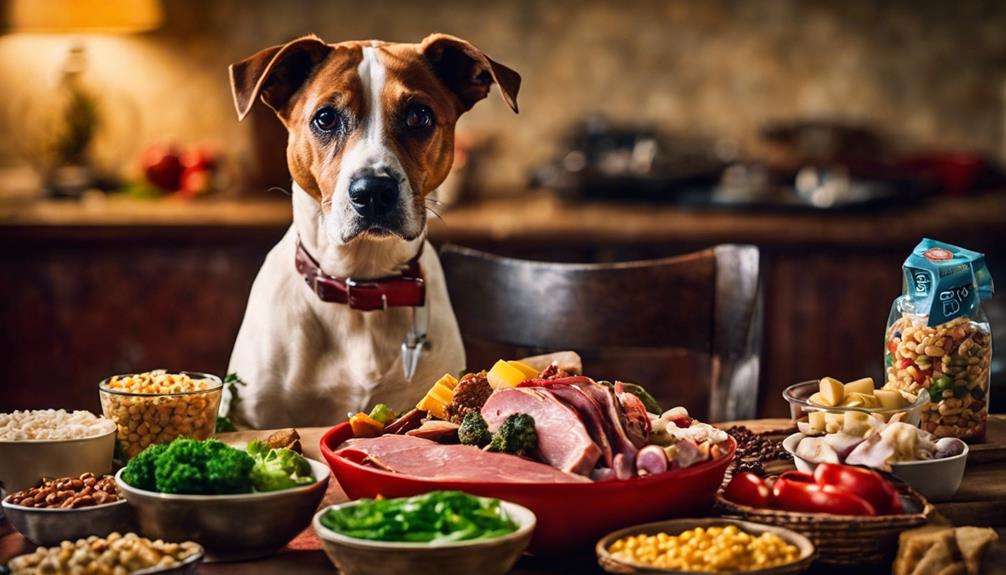
To maintain the health and vitality of Rottle dogs, understanding their nutritional needs is essential. Their diet should be meticulously planned to not only meet their basic requirements but also address specific issues such as weight management and food allergies.
Here’s how to ensure your Rottle gets the nutrition they need:
A balanced diet for Rottles should include the right mix of proteins, carbohydrates, fats, vitamins, and minerals. This combination supports their overall health and energy levels. For dogs prone to putting on extra pounds, managing their weight is vital. Implementing portion control and opting for foods lower in calories can help keep them in shape.
For Rottles with sensitive stomachs, choosing hypoallergenic ingredients is key. This step helps avoid allergic reactions and keeps your dog feeling their best. It’s also smart to have regular check-ins with a vet. These visits can help tailor the diet to your dog’s changing needs over time.
Creating a diet plan that considers your Rottle’s age, size, activity level, and health conditions is crucial. This personalized approach ensures they get exactly what they need to thrive. Remember, a well-thought-out diet is the foundation of a long, happy life for your furry companion.
Ideal Diet Components
Rottle dogs, known for their active lifestyle and need for muscle development, should eat a diet that’s high in quality protein. This ensures they get the necessary amino acids for muscle repair and growth. Lean meats are great for this purpose.
It’s also crucial to include healthy fats in their diet, especially from sources like fish oil. These fats are key for keeping their skin and coat in good condition, thanks to the omega-3 fatty acids that help with cell health and reducing inflammation.
Complex carbohydrates shouldn’t be overlooked either. Foods like whole grains and vegetables provide the energy these dogs need to stay active and support their digestive system.
Also, constant access to fresh water is a must to keep them well-hydrated and ensure their metabolism works efficiently. For the best dietary plan, talking to a vet is a wise move. They can consider the dog’s age, size, and how active they are to recommend the perfect diet.
Managing Weight Issues
Managing Weight in Rottle Dogs
For Rottle dogs, keeping an eye on their diet is key to avoiding weight problems that can lead to health issues. These dogs tend to gain weight easily, so it’s crucial to watch what they eat. A diet of high-quality dog food that’s balanced and made just for their needs is a must. This means the right mix of proteins and fats. It’s also important not to overfeed them or give them too many treats as this can lead to unwanted weight gain.
Exercise is just as important as diet when it comes to keeping a Rottle healthy. A good routine of physical activity helps in maintaining an ideal weight. For the best advice on managing your Rottle’s weight, talking to a veterinarian is a smart move. They can give you tailored advice that takes into account your dog’s specific dietary needs, helping to keep obesity at bay and ensuring your Rottle stays in great shape.
Allergy-Friendly Food Options
Choosing the right allergy-friendly food for your Rottle means paying close attention to their diet and potential allergies. Consider getting hypoallergenic dog food, which is made to lower the chance of allergic reactions. These diets often have fewer ingredients, making it easier to avoid allergens.
Grain-free options or foods with uncommon proteins like venison or duck could help dogs with sensitivities, as these are less likely to cause allergies. It’s important to talk to a vet to make sure the food fits your Rottle’s health needs and effectively manages their allergies.
Always check food labels and ingredients to make sure there are no common allergens, keeping your Rottle healthy with a well-chosen hypoallergenic diet.
Frequently Asked Questions
What Kind of Dog Is a Rottle?
- Rottles mix Rottweiler loyalty with Poodle smarts.
- They’re trainable and great for families.
- Their coat is hypoallergenic, good for allergy sufferers.
Is the Rottle a Good Guard Dog?
- Protective and loyal, ideal for family safety.
- Territorial instincts make them alert guardians.
- Their loyalty enhances family bond and security.
Are Rottles Hypoallergenic?
- Rottles help reduce allergies with less shedding.
- Grooming is key for maintaining their coat.
- Ideal for sensitive individuals seeking a pet.

